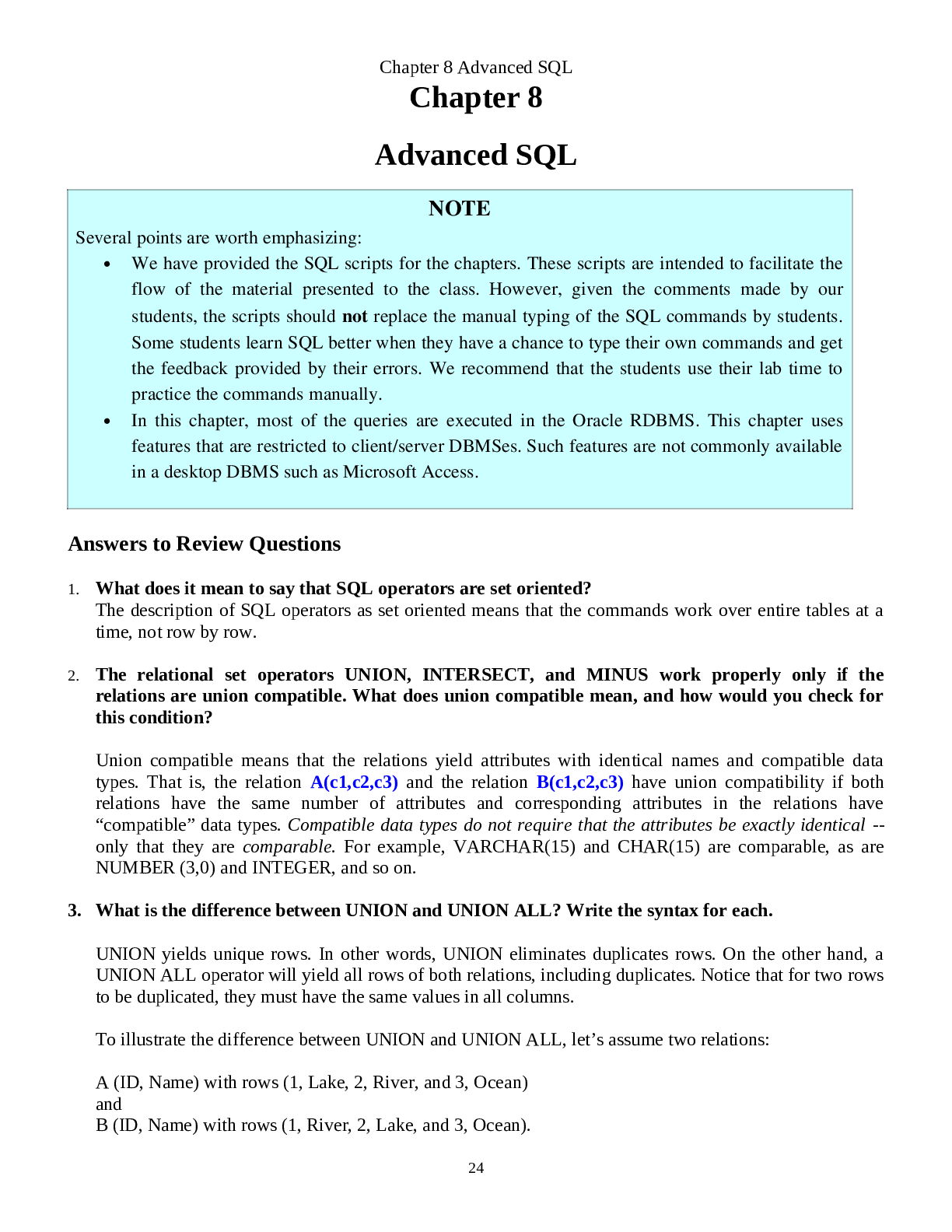Computer Science > QUESTIONS & ANSWERS > University of California, Irvine_EECS 148eecs_148_2019_Midterm_solutions-REVIEWED AND EDITED BY EXPE (All)
University of California, Irvine_EECS 148eecs_148_2019_Midterm_solutions-REVIEWED AND EDITED BY EXPERTS 2021
Document Content and Description Below
CS 132/EECS 148 Computer Networks - Winter 2019 Midterm Prof. Marco Levorato Full Name: Student ID: Seat no.: Date: February 14th, 2019 • This exam booklet consists of 8 pages: this page, 6 pa... ges of answer sheets and 1 extra sheet. • IF you use the extra sheet, clearly state it under each question that continues there. • There are 10 MCQ questions and 7 descriptive questions. • Points pre-assigned to review questions are just an indication of the final score: partial and unsatisfactory answer/solution will receive a fraction of the points, whereas excellent answers may exceed the indicated points. • Indicate name and UCI Student ID number in ALL the solution sheets. You will received 2 additional points for doing so. • Time allowed: 70 minutes. • If you think that a question is ambiguous, you should: 1) List the possible interpretations 2) Indicate which interpretation you will be using 3) Make your answer consistent with the interpretation If your interpretation oversimplifies or trivializes the question, you may lose points.2 Question 1. (3 points) The advantage of layered design is: Software can be written in the smallest number of lines of code. Competing network product designers use the same components. A protocol designer at one layer doesnt need to know about the interface used by a protocol at the next lower layer. Interfaces are standardized. Question 2. (3 points) In interactive multimedia applications, which of the following performance measures has a flexible constraint to ensure acceptable performance? Packet loss. Delay. Delay variation. Throughput. Question 3. (3 points) If the most popular application in a network is uncompressed video streaming, which network architecture is most appropriate? Circuit-switching. Packet-switching. Question 4. (3 points) Which of the following scheduling methods gives an upper bound to the delay? FIFO. Priority. Weighted round-robin. Leaky-bucket. Weighted round-robin & Leaky-bucket. Question 5. (3 points) Which of the following is not included in the RTP header? Timestamp. Payload type. Synchronization source identifier. Acknowledgment number. Sequence number. Question 6. (3 points) In the internet layer hierarchy as the data packet moves from the upper to the lower layers, headers are: Added. Removed. Rearranged. Modified. [Show More]
Last updated: 2 years ago
Preview 1 out of 15 pages

Buy this document to get the full access instantly
Instant Download Access after purchase
Buy NowInstant download
We Accept:

Reviews( 0 )
$9.00
Can't find what you want? Try our AI powered Search
Document information
Connected school, study & course
About the document
Uploaded On
May 07, 2021
Number of pages
15
Written in
Additional information
This document has been written for:
Uploaded
May 07, 2021
Downloads
0
Views
60








.png)

.png)




.png)

.png)

.png)





